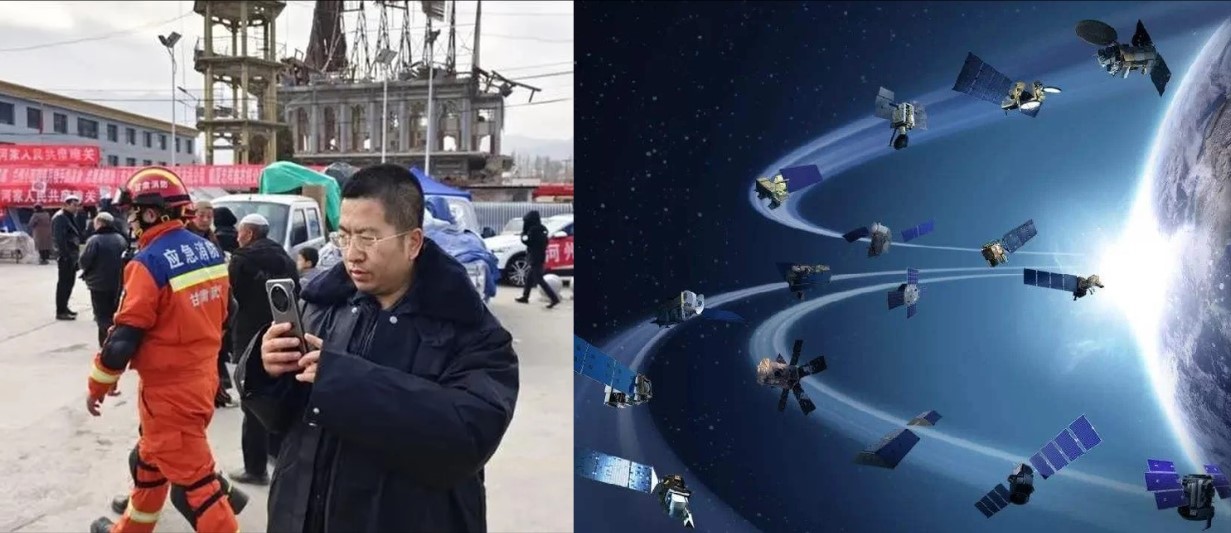The Tiantong Project: How Chinese Scientists Developed the World's First Satellite Enabling Smartphone Calls

Latest Technology News
China
In the aftermath of the devastating 2008 Sichuan earthquake, which claimed over 80,000 lives and highlighted critical communication breakdowns, the Chinese government quietly initiated the Tiantong Project. Named after the concept of "connecting with heaven," this project aimed to establish a satellite communication system accessible to all, irrespective of socio-economic status. Over the past 16 years, the Tiantong Project has not only made significant strides in satellite communication but also catalyzed new trends in mobile phone development, with profound implications for disaster response and everyday connectivity.
The Tiantong Satellite Network:
The cornerstone of the Tiantong Project is the Tiantong Satellite Network, comprising a series of satellites orbiting at an altitude of 36,000km. Launched in phases since 2016, these satellites provide comprehensive coverage across the Asia-Pacific region, from the Middle East to the Pacific Ocean. Their strategic positioning enables uninterrupted communication, even in remote or disaster-stricken areas. Notably, the Tiantong satellites facilitate direct satellite connectivity for mobile phones, a groundbreaking advancement that has revolutionized communication accessibility.
Overcoming Technical Challenges:
One of the primary technical hurdles in implementing satellite communication on a mass scale has been passive intermodulation (PIM) interference. Traditional communication satellite networks have frequently experienced failures due to signal degradation caused by PIM. However, Chinese scientists leading the Tiantong Project have made significant breakthroughs in understanding and mitigating this phenomenon. By delving into the microscopic physical mechanisms underlying PIM, they developed innovative simulation software and suppression techniques, ensuring optimal satellite performance in harsh working conditions.
Pioneering Mobile Connectivity:
The integration of satellite calling functionality into smartphones marks a paradigm shift in mobile technology. Huawei Technologies spearheaded this advancement with the release of the world's first smartphone capable of direct satellite calls. Subsequently, other Chinese smartphone manufacturers followed suit, introducing similar models equipped with satellite connectivity. This technological convergence not only enhances communication resilience during emergencies but also extends connectivity to remote regions with limited terrestrial infrastructure.
Enhancing Disaster Response:
The tangible impact of the Tiantong Project became evident during the 6.2-magnitude earthquake in Gansu province. Despite widespread communication disruptions, individuals equipped with Tiantong-enabled smartphones could establish contact with the outside world via satellite calls. This capability significantly facilitated rescue operations and coordination efforts, underscoring the pivotal role of satellite communication in disaster response. The ability to connect with emergency services and loved ones during crises can mitigate the human toll of natural disasters, exemplifying the societal benefits of technological innovation.
Global Implications:
While China leads the forefront in satellite communication technology with the Tiantong Project, other initiatives such as SpaceX's Starlink project present formidable competition. Starlink satellites operate in low-Earth orbit, offering advantages in reduced PIM interference and compatibility with older 4G phones. However, the Tiantong Satellite Network boasts wider coverage and the ability to connect directly with smartphones, providing a compelling alternative. As the space race intensifies, the competition between these technological giants is poised to shape the future of global connectivity.
Patent Dominance and Strategic Advantage:
China's extensive patent filings for Tiantong satellite technology confer strategic advantages in the competitive landscape. By securing intellectual property rights, Chinese hi-tech companies gain autonomy and protection from potential patent barriers or sanctions from Western counterparts. This preemptive move ensures the continued advancement and commercialization of Tiantong technology, bolstering China's position as a global leader in satellite communication and mobile innovation.
Future Outlook:
As the Tiantong Project continues to evolve, the focus shifts towards sustainability and scalability. Ensuring the longevity and reliability of satellite infrastructure amidst technological advancements and geopolitical dynamics remains paramount. Additionally, ongoing research and development efforts aim to refine satellite communication protocols and enhance user experience. With the convergence of satellite and mobile technologies driving unprecedented connectivity, the Tiantong Project stands as a testament to human ingenuity and resilience in overcoming communication barriers.
Conclusion:
The Tiantong Project represents a transformative leap forward in satellite communication and mobile technology, spurred by the imperative of resilience and connectivity in the face of natural disasters. Through relentless innovation and collaboration, Chinese scientists and engineers have surmounted formidable technical challenges to establish a robust satellite network accessible to all. As the world increasingly relies on interconnectedness, initiatives like the Tiantong Project serve as beacons of progress, bridging gaps and empowering communities through universal access to communication.


